The basking shark is Britain's largest fish. It is about the length of a double-decker bus. But despite its size, this shark feeds on tiny prey, filtering around two million litres of water per hour through its gills.
Explore facts about this gentle giant.

Basking shark (Cetorhinus maximus), the largest fish seen around the UK © Martin Prochazkacz/ Shutterstock
Basking shark fast facts
- Scientific name: Cetorhinus maximus
- Length: up to 12 metres
- Weight: up to six tonnes
- Average lifespan: unknown, but believed to be around 50 years
- UK status: native, seasonal visitor
- UK population: unknown
- UK conservation status: protected
- IUCN Red List category: endangered
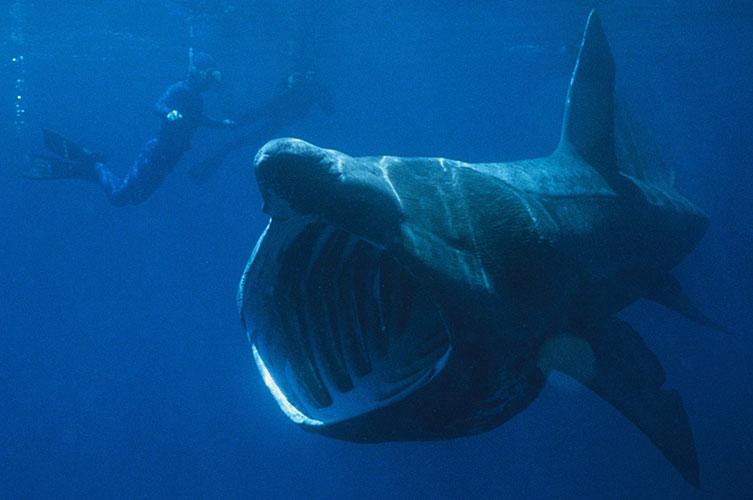
Basking sharks can grow to 12m long and open their mouths extremely wide. Image from Chris Gotschalk via Wikimedia Commons, public domain.
What do basking sharks look like?
The basking shark has a large, light grey body, which is darker on the top side and becomes lighter underneath. It has a large, black, triangular dorsal fin on its back.
The shark's wide-opening jaw is white inside with black gill rakers (finger-like structures that prevent food from escaping through the gills). The mouth has several rows of very small teeth.
What do basking sharks eat?
The basking shark exclusively feeds on microscopic animals called zooplankton, which it catches by opening its mouth and allowing water to flow over its enlarged gill slits. Zooplankton in the water are then trapped in gill rakers covered in mucus.
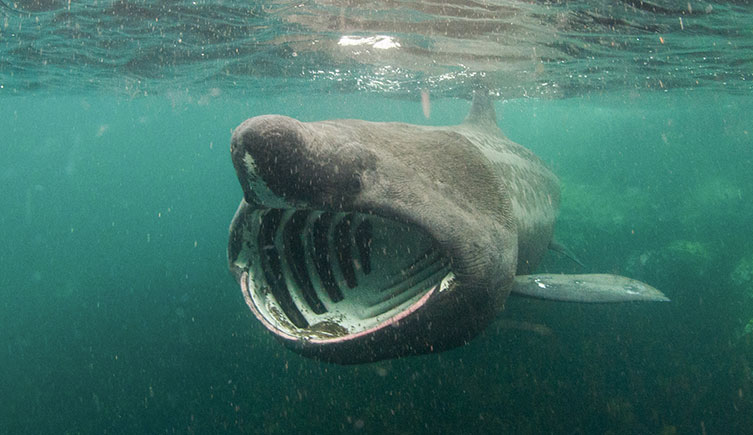
View into the open mouth of a basking shark showing the black gill rakers that filter tiny animals from the water as it swims © Mark William Kirkland/ Shutterstock
Where do basking sharks live?
Basking sharks are found in British coastal waters between May and October. They migrate south as far as North Africa during the winter months, although some animals remain in British and Irish waters and there is also some evidence of transatlantic migration.
They swim in coastal waters around all of Britain, but are more frequently spotted around Cornwall, western Scotland, the Isle of Man and in the western English Channel. They can be found in the open ocean, in the surf zone and occasionally in brackish water.
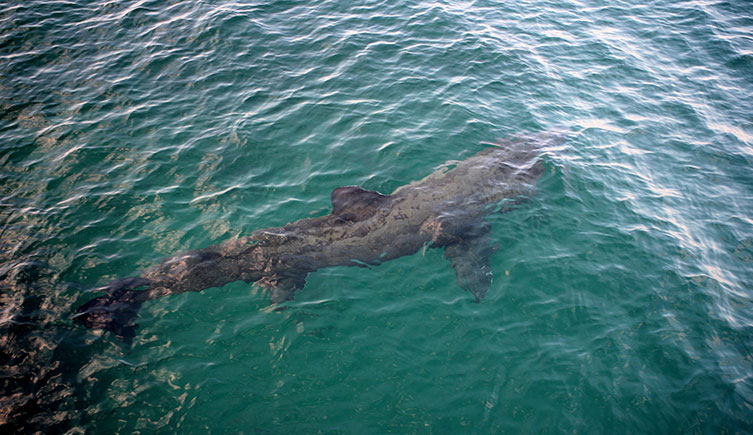
Looking down onto a basking shark swimming close to the water's surface off the west coast of Scotland. Image © Hermés via Wikimedia Commons, licensed under CC BY 2.0
Lifestyle of basking sharks
The sharks spend much of the summer months at the sea's surface, moving slowly. This behaviour earned them the name 'basking shark' because they appear to be soaking up the Sun's warmth.
Basking sharks are usually solitary, but sometimes they swim in single-sex shoals, generally containing no more than a few individuals.
A clip from Wild Ireland: The Edge of the World showing three basking sharks swimming off the coast of Donegal © BBC Northern Ireland
The mating habits of the basking shark are largely unknown, although it is confirmed as an egg-laying species. The sharks are thought to mate in early summer and have a 12-36-month gestation period. They are believed to take a break between litters. The resulting slow rate of reproduction leaves them more vulnerable to extinction than faster-breeding species.
Basking shark sightings
Basking sharks can be found in almost all British coastal waters during the summer months. More frequent sightings are reported around southwest England, Wales and the west coast of Scotland. Their hotspots are the Isle of Skye and the Isle of Mull in the Scottish Hebrides, and the Isle of Man, Devon and Cornwall.

In summer, basking sharks spend a lot of the time at the sea's surface. Image © rossbeane via Wikimedia Commons, licensed under CC BY-SA 2.0
Basking sharks can be identified by the large, dark, triangular dorsal fin moving slowly through the water.
You have the best chance of seeing one on a sunny day, when the shark's zooplankton food source will be most abundant at the surface.
As they move through the water feeding, they will often twist their bodies around, sometimes performing a full 360° roll.
Basking sharks swimming and feeding off the Cornish coast © padaxes via YouTube
When observing basking sharks, experts advise maintaining a distance of at least four metres if swimming and 100 metres if in a vehicle. Check out the Shark Trust's code of conduct.
Basking shark conservation
Globally, basking shark numbers are decreasing and the species is considered endangered. Although basking sharks are also recognised as endangered in the northeast Atlantic, the latest assessment has found populations here to be stable.
In the past, basking sharks were fished primarily for their liver oil, but also for their skin, meat and fins. The sharks were hunted around the UK until 1995, when the last basking shark fishery in British waters closed.
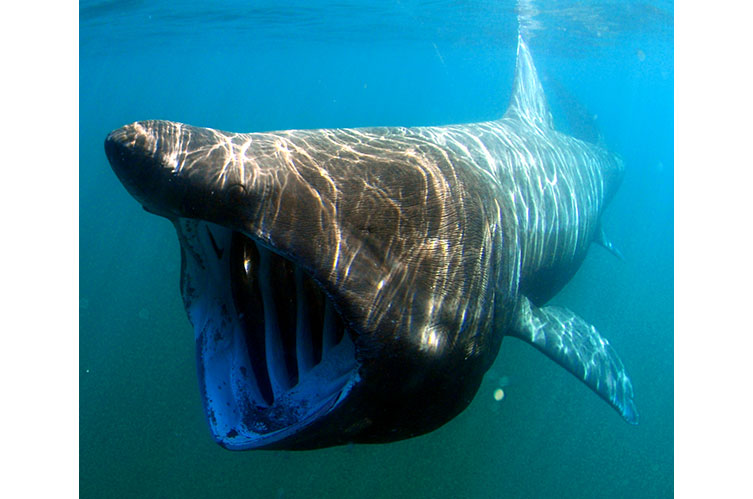
Basking shark populations have been severely depleted by years of hunting. Image from Greg Skomal / NOAA Fisheries Service via Wikimedia Commons, public domain.
Fishing this species has been banned in British waters since 1998 and in European Union waters (and by EU-registered vessels worldwide) since 2007.
Today, these animals are heavily protected, both in the UK and across much of their range internationally. But they are still hunted in some areas - primarily in demand in parts of Asia for their large fins.
Basking sharks are also at risk of becoming bycatch (caught unintentionally during fishing for a different species), entangled in fishing gear, or being struck and potentially killed by commercial or recreational boats. Collisions are relatively common in UK waters.
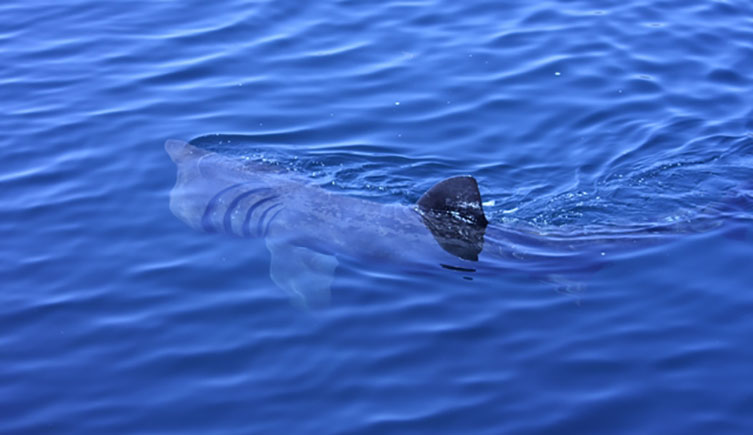
The dorsal fin of basking sharks is very large - over one metre tall in some cases. They are prized in the shark fin trade and have fetched huge prices. These endangered animals are now protected under international law across most of their range. Image © Mmo iwdg via Wikimedia Commons, licensed under CC BY-SA 3.0
Scientists are concerned about the threat microplastics might pose to basking sharks. The impact of filtering tiny plastic particles through their gill rakers and potential ingestion isn't yet known. Climate change is another potential threat, as it has been found to affect the distribution of their prey.
Monitoring, conservation and research is vital to ensure the survival of these animals. If you see any basking sharks, you can help by reporting your sightings to the Shark Trust's Basking Shark Project.
In December 2020, four sites were designated as Marine Protected Areas by the Scottish Government. The largest, in the Sea of the Hebrides, is the world's first protected area for basking sharks.
Did you know?
The basking shark can open its mouth up to a metre wide. It is the world's second largest fish, surpassed only by the whale shark.

British wildlife
Find out about the plants and animals that make the UK home.



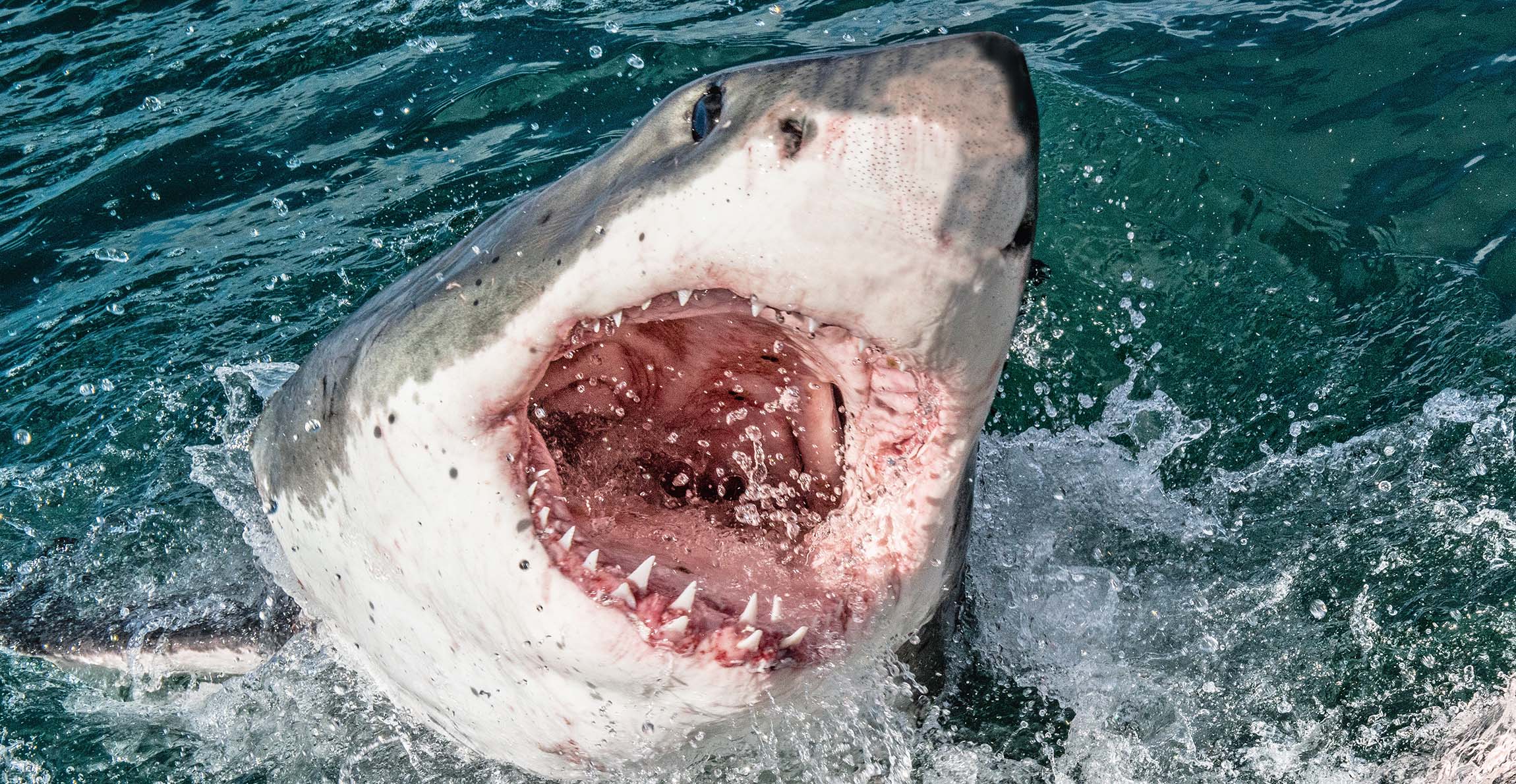
Don't miss a thing
Receive email updates about our news, science, exhibitions, events, products, services and fundraising activities. We may occasionally include third-party content from our corporate partners and other museums. We will not share your personal details with these third parties. You must be over the age of 13. Privacy notice.
Follow us on social media